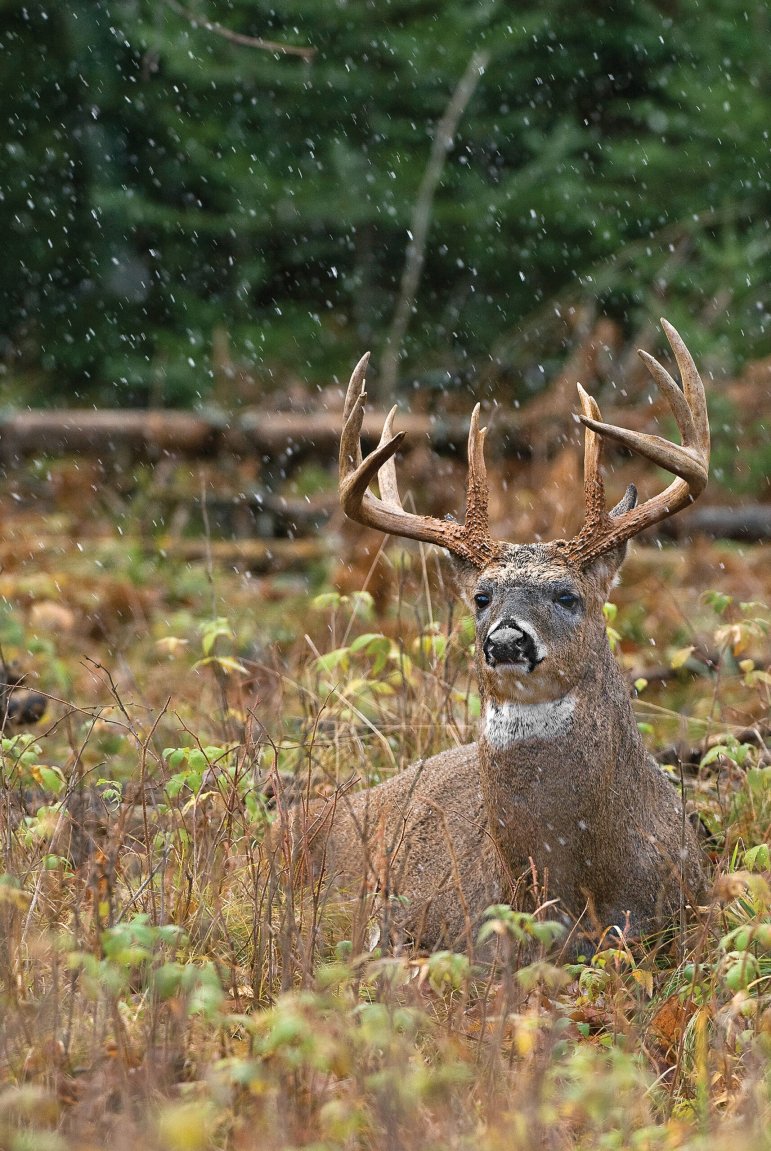Mid- and late-season bucks in areas that receive even moderate hunting pressure are notoriously difficult to hunt. They are trip-wire skittish and conditioned by hunting pressure into becoming nocturnal.
I found myself faced with one of those nocturnal nightmares a couple of seasons ago. After weeks of playing a one-sided game of cat and mouse—one which I continually lost—I realized that the only way to get close to the big 10-pointer I was after was to go for broke. Somehow I’d need to catch him in a staging area before dark. However, when I couldn’t pinpoint the precise location he was using, the time came to get creative and construct one with the hope that he’d be attracted to it. I hatched a plan.
First, I cleared a series of narrow trails that connected an established bedding area to a primary food source. Next, I added a fresh mock scrape and a variety of attractants. Finally, with the right wind and hunting conditions, I eased into the edge of the newly established staging area—and caught the buck completely off guard just before dark. This particular setup and strategy created a false sense of security for that deer. The buck felt just safe enough to sneak off his bed a few minutes earlier than usual, and that was all I needed.
WHOPPER STOPPERS To whitetail hunters, staging areas are the points between bedding and feeding zones that deer use to momentarily hang out in before going to feed or returning to bed. Big bucks will often use these staging areas to stop and monitor open feeding zones such as agricultural fields or food plots.
Some staging points may also serve as secondary feeding areas for whitetails, where they grab a quick snack before moving into a primary food source. These areas are usually made up of thick cover and enable deer to scent-check and monitor primary feeding areas for potential danger—or estrous does—from a safe distance.
Your first move should be to use a topo or aerial map to locate and choose a setup location on a natural staging area. Next, scout this area on foot and look for large droppings, tracks, rubs, scrapes, trails, or secondary food sources. When the evidence is not so clear, you’ll need to go it alone.
IF YOU BUILD IT. . . The proactive approach takes a bit more work, but it’s relatively simple to pull off—even if it’s a mid-season course correction. In states where it’s legal, sweeten the deal by adding commercially produced powdered attractants like Sweet Rack 18, C’Mere Deer, or Acorn Rage. Throwing out some apples, pears, or scattering corn across the staging area will help condition bucks to use the site.
If these are not legal options, make several mock scrapes by collecting large deer droppings from nearby feeding areas and distributing these throughout the staging area in small piles. Next, randomly spray fresh buck urine across the staging area and along primary entry and exit routes.
This vital step will add realism to your staging area and draw immediate attention, which will ultimately lead to a much quicker reaction from resident bucks.
BIGGER PLANS
Once you’ve put a bandage on this season, give some thought to making improvements to your hunting parcel down the road. Here are a couple of strategies to try:
•Dig A Watering Hole: A small watering hole within a staging area is a great high-impact option that can draw and attract cautious bucks, especially during hot and dry periods.
•Cut A Path: With a weed trimmer, rake, and hand saw, clear out entry and exit routes that connect your mock staging area to known feeding and bedding sites.
Directing traffic with these handmade narrow deer paths enables you to run killer routes through prime ambush points without bumping deer in the process.
Monitor these key areas with trail cameras to pinpoint shooters, monitor movement, and establish daily patterns.
